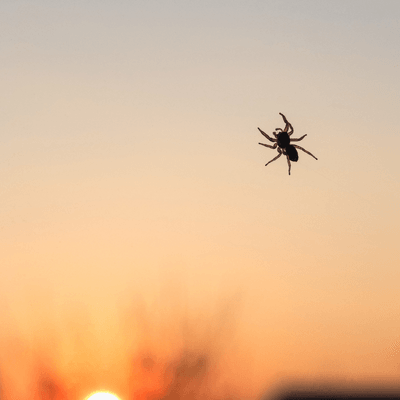
Slide title
Write your caption hereButton
Spider Exterminator
Of the pests we discover in our homes, it is the spider that we typically fear most. A recent survey showed that 75% of participants admitted to being afraid of them. So, what is it about them that inspires such widespread fear? Some scientists theorize that it's genetic or stems from a traumatic childhood experience. But no matter what, it's clear that we don't like them. The real question is, is our fear justified? And just how dangerous are the ones that commonly infest our homes? To answer these questions, look closely at the ones we often encounter in Wisconsin or Minnesota.
Common House Spider
This one is the most ambitious home "decorator." It is also the probable culprit for most webs tucked into ceiling corners. They are about 1/4" long, brownish or yellow, sometimes with white spots, and are not dangerous. They rarely bite, and when they do, they don't have enough venom to cause anything more than a minor irritation.
Giant House Spider
Probably the largest one you'll come across. With a 3/4" long body and 1-1/2" legs, this brown, hairy monster can frighten you. It is harmless, with biting and venom characteristics on par with the common house spider mentioned above.
Cellar Spider
We know this arachnid as Daddy Long Legs, and they are the most recognizable with their tiny body and long, spindly legs. Cellar spiders were once believed to be deadly, but that is a myth. In truth, they have very short fangs that can't break our skin, and their venom has little effect. Thus, they are harmless. Interestingly, they are not true Daddy Long Legs. That distinction belongs to the Harvestmen, a species that is not a spider.
Sac Spider
The sac spider averages 1/2" long and is typically yellowish. This arachnid doesn't spin a traditional web, instead preferring to hunt its prey. These spiders are marginally dangerous, prone to bite more often, and have potent venom. A bite is painful and typically turns into a large welt that may need medical attention.
Brown Recluse Spider
Like sac spiders, the brown recluse is not a web spinner but a hunter that stalks its prey. They look like the sac spider, except that recluses have a fiddle-shaped marking on their backs that sacs don't. This one is dangerous. They can bite when threatened, and their venom is necrotic, meaning it rots the flesh it comes into contact with. A bite can cause unbearable pain.
Black Widow Spider
The most infamous and dangerous on our list, you can recognize black widows by their black coloring and the red hourglass figure on their abdomen. Females are twice the size of males, at 1.5" long. (And yes, she is known to devour her mate after intercourse.) They are not very aggressive, but they can bite. Their venom affects your nervous system, so it is imperative to seek medical help immediately.
Got Spiders? Get help.
It's not wise to cohabitate with them, no matter their species, but this is especially true when some of the ones creeping around may be dangerous. So, if you've got spiders and fear them and want them gone, that's not phobic; it's just smart. Professional pest control can make a huge difference; nobody does that better than 1st Defense Pest Solutions. We're the top-rated pest professionals in the La Crosse area and are ready to serve you.
Contact us today and let's get rid of them.
All Rights Reserved | 1st Defense Pest Solutions
